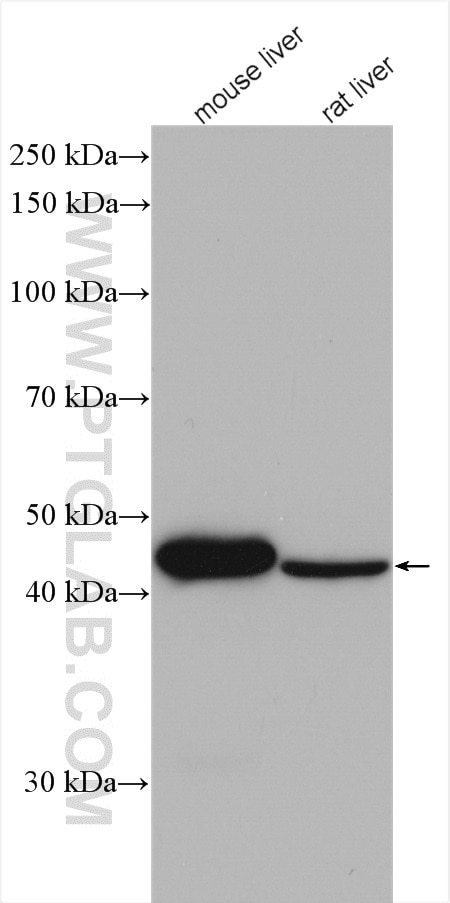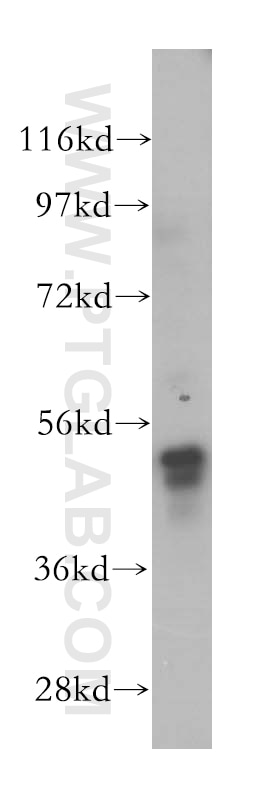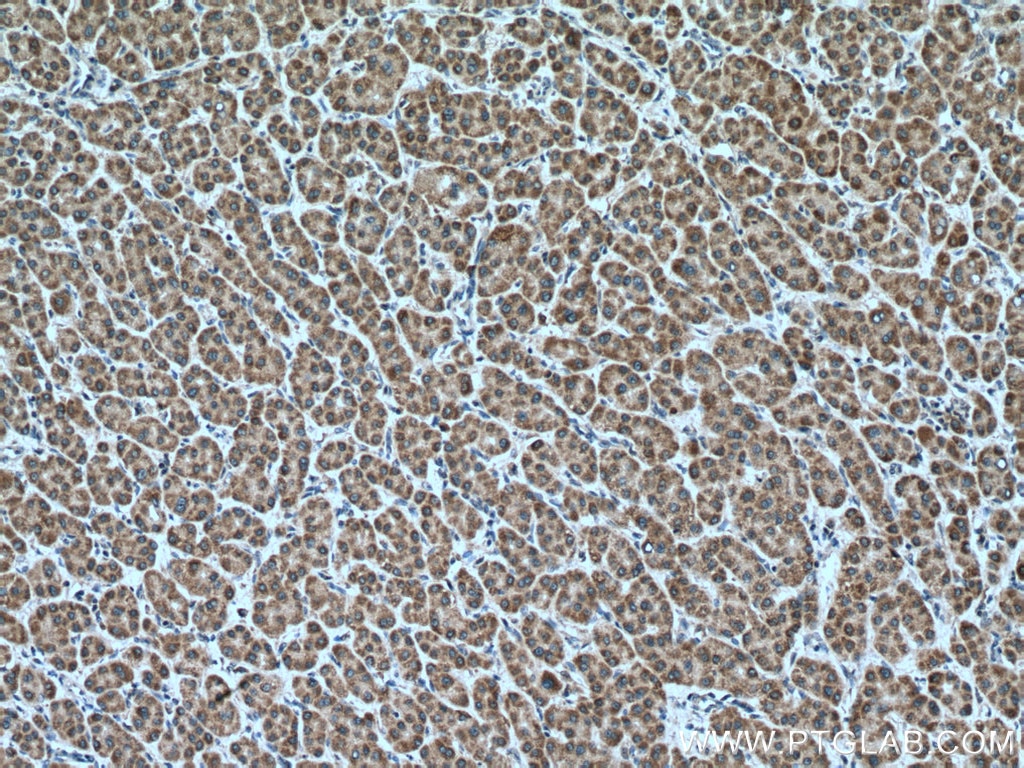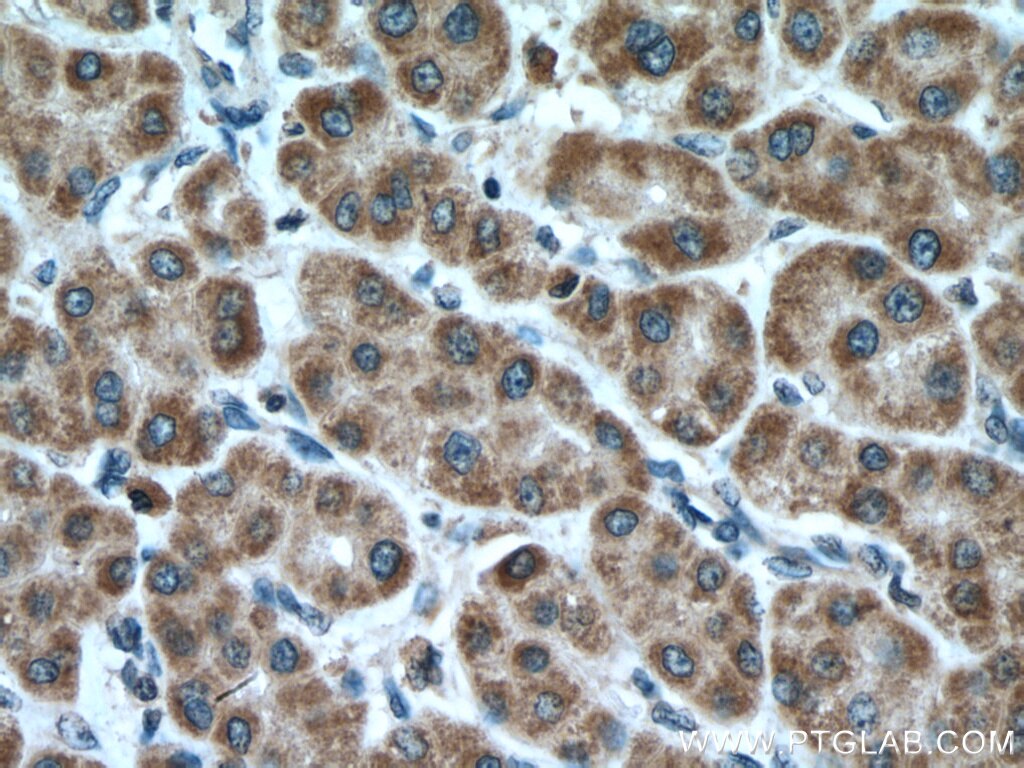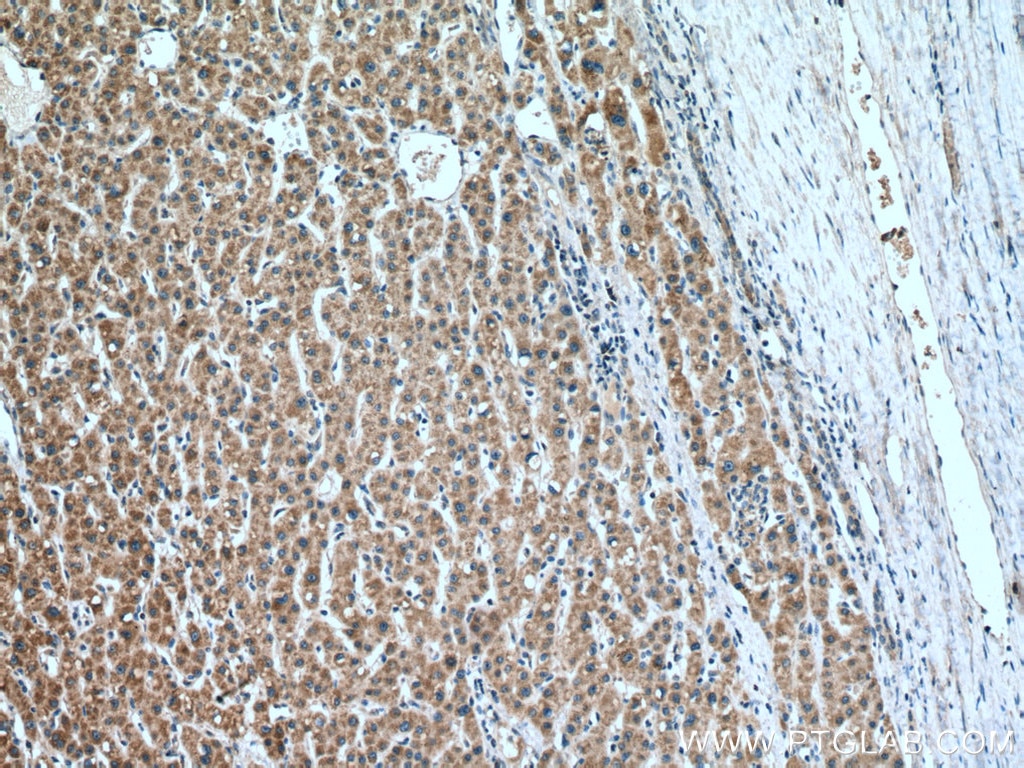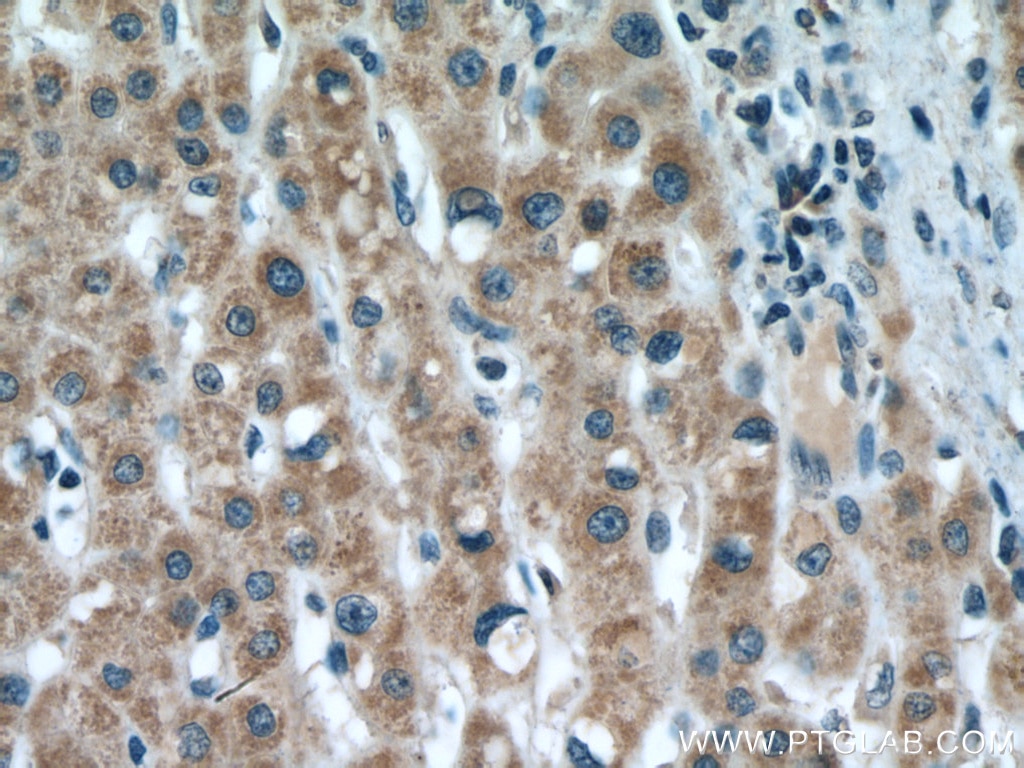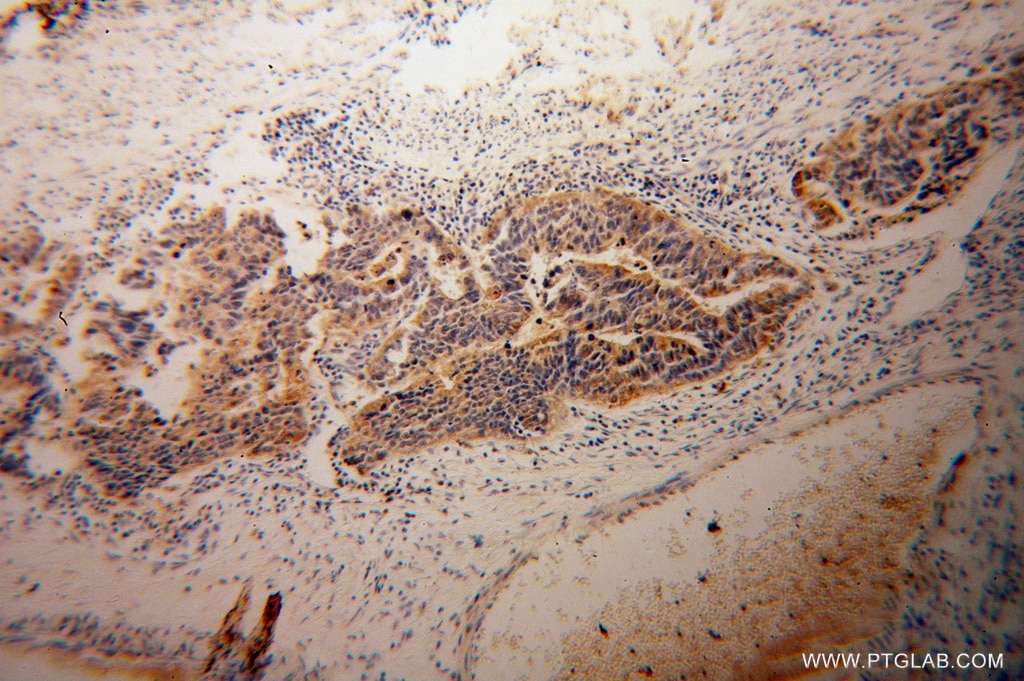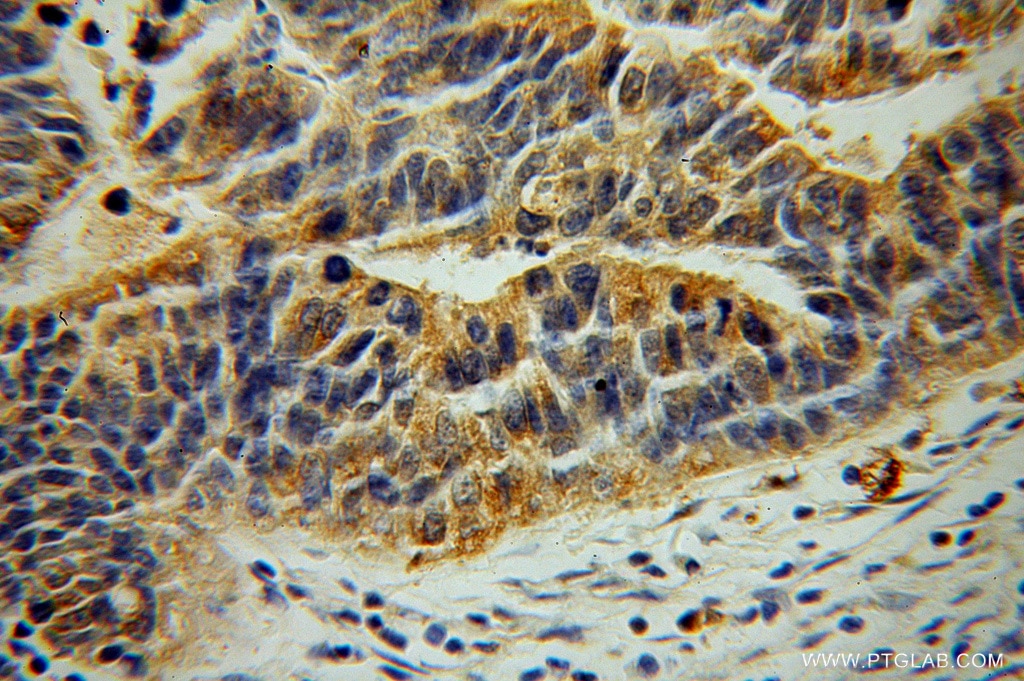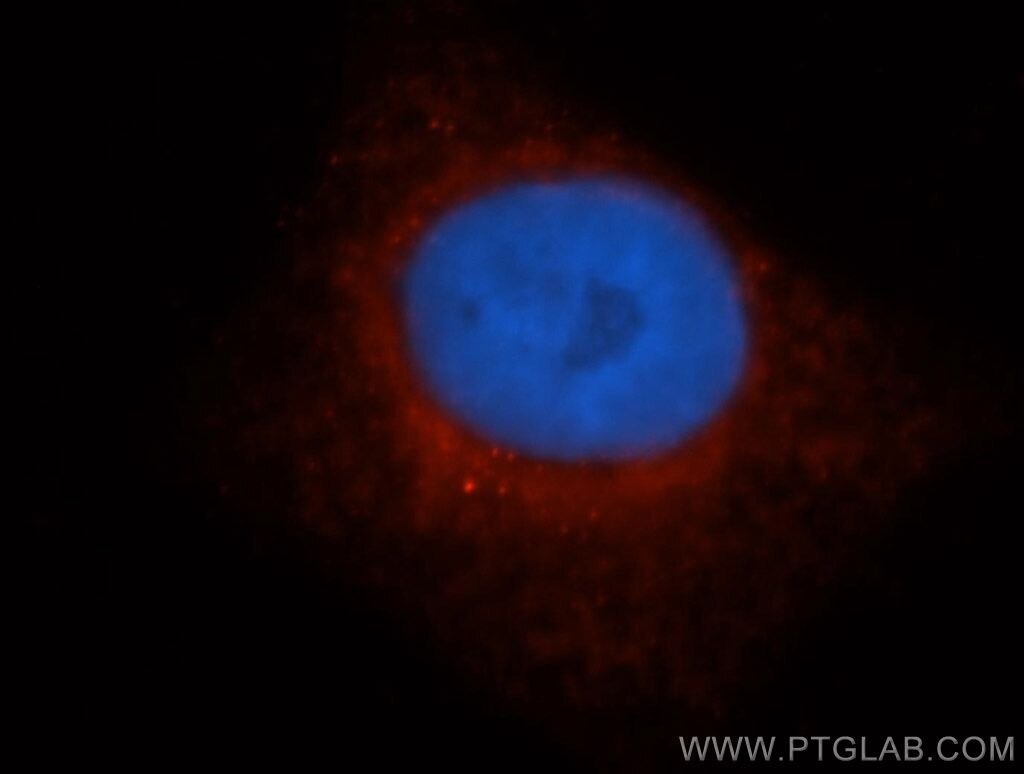LDHD Polyklonaler Antikörper
LDHD Polyklonal Antikörper für IF, IHC, WB,ELISA
Wirt / Isotyp
Kaninchen / IgG
Getestete Reaktivität
human, Maus, Ratte
Anwendung
WB, IP, IHC, IF, ELISA
Konjugation
Unkonjugiert
Kat-Nr. : 14398-1-AP
Synonyme
Galerie der Validierungsdaten
Geprüfte Anwendungen
| Erfolgreiche Detektion in WB | Mauslebergewebe, HepG2-Zellen, Rattenlebergewebe |
| Erfolgreiche Detektion in IHC | humanes Leberkarzinomgewebe, humanes Osteosarkomgewebe Hinweis: Antigendemaskierung mit TE-Puffer pH 9,0 empfohlen. (*) Wahlweise kann die Antigendemaskierung auch mit Citratpuffer pH 6,0 erfolgen. |
| Erfolgreiche Detektion in IF | HepG2-Zellen |
Empfohlene Verdünnung
| Anwendung | Verdünnung |
|---|---|
| Western Blot (WB) | WB : 1:1000-1:4000 |
| Immunhistochemie (IHC) | IHC : 1:50-1:500 |
| Immunfluoreszenz (IF) | IF : 1:20-1:200 |
| It is recommended that this reagent should be titrated in each testing system to obtain optimal results. | |
| Sample-dependent, check data in validation data gallery | |
Veröffentlichte Anwendungen
| WB | See 1 publications below |
| IHC | See 2 publications below |
| IF | See 1 publications below |
| IP | See 1 publications below |
Produktinformation
14398-1-AP bindet in WB, IP, IHC, IF, ELISA LDHD und zeigt Reaktivität mit human, Maus, Ratten
| Getestete Reaktivität | human, Maus, Ratte |
| In Publikationen genannte Reaktivität | human |
| Wirt / Isotyp | Kaninchen / IgG |
| Klonalität | Polyklonal |
| Typ | Antikörper |
| Immunogen | LDHD fusion protein Ag5897 |
| Vollständiger Name | lactate dehydrogenase D |
| Berechnetes Molekulargewicht | 52 kDa |
| Beobachtetes Molekulargewicht | 45-54 kDa |
| GenBank-Zugangsnummer | BC047902 |
| Gene symbol | LDHD |
| Gene ID (NCBI) | 197257 |
| Konjugation | Unkonjugiert |
| Form | Liquid |
| Reinigungsmethode | Antigen-Affinitätsreinigung |
| Lagerungspuffer | PBS mit 0.02% Natriumazid und 50% Glycerin pH 7.3. |
| Lagerungsbedingungen | Bei -20°C lagern. Nach dem Versand ein Jahr lang stabil Aliquotieren ist bei -20oC Lagerung nicht notwendig. 20ul Größen enthalten 0,1% BSA. |
Hintergrundinformationen
Two naturally occurring forms of lactate dehydrogenase with similar but unique substrate specificities have been isolated in lower organisms including invertebrates, fungi, and prokaryotes. These dehydrogenase enzymes are L-lactate dehydrogenase and D-lactate dehydrogenase (LDHD) that are specific to the L and D isomers of lactate, respectively (PMID: 12127981). In lactic acid bacteria, LDHD plays a key role in anaerobic energy metabolism (PMID: 497162). Despite the identification of D-lactate and other D-2-hydroxyacids in prokaryotes, and the obvious connections and similarities to vertebrate metabolic pathways, very few mammalian D-2-hydroxyacid dehydrogenases have been found. LDHD has 2 isoforms with the molecular weight of 52 and 54kDa, and can be detected as 45-54 kDa.
Protokolle
| Produktspezifische Protokolle | |
|---|---|
| WB protocol for LDHD antibody 14398-1-AP | Protokoll herunterladen |
| IHC protocol for LDHD antibody 14398-1-AP | Protokoll herunterladen |
| IF protocol for LDHD antibody 14398-1-AP | Protokoll herunterladen |
| Standard-Protokolle | |
|---|---|
| Klicken Sie hier, um unsere Standardprotokolle anzuzeigen |
Publikationen
| Species | Application | Title |
|---|---|---|
BMC Cancer Lactate dehydrogenase D serves as a novel biomarker for prognosis and immune infiltration in lung adenocarcinoma | ||
Signal Transduct Target Ther CDK7-YAP-LDHD axis promotes D-lactate elimination and ferroptosis defense to support cancer stem cell-like properties |
